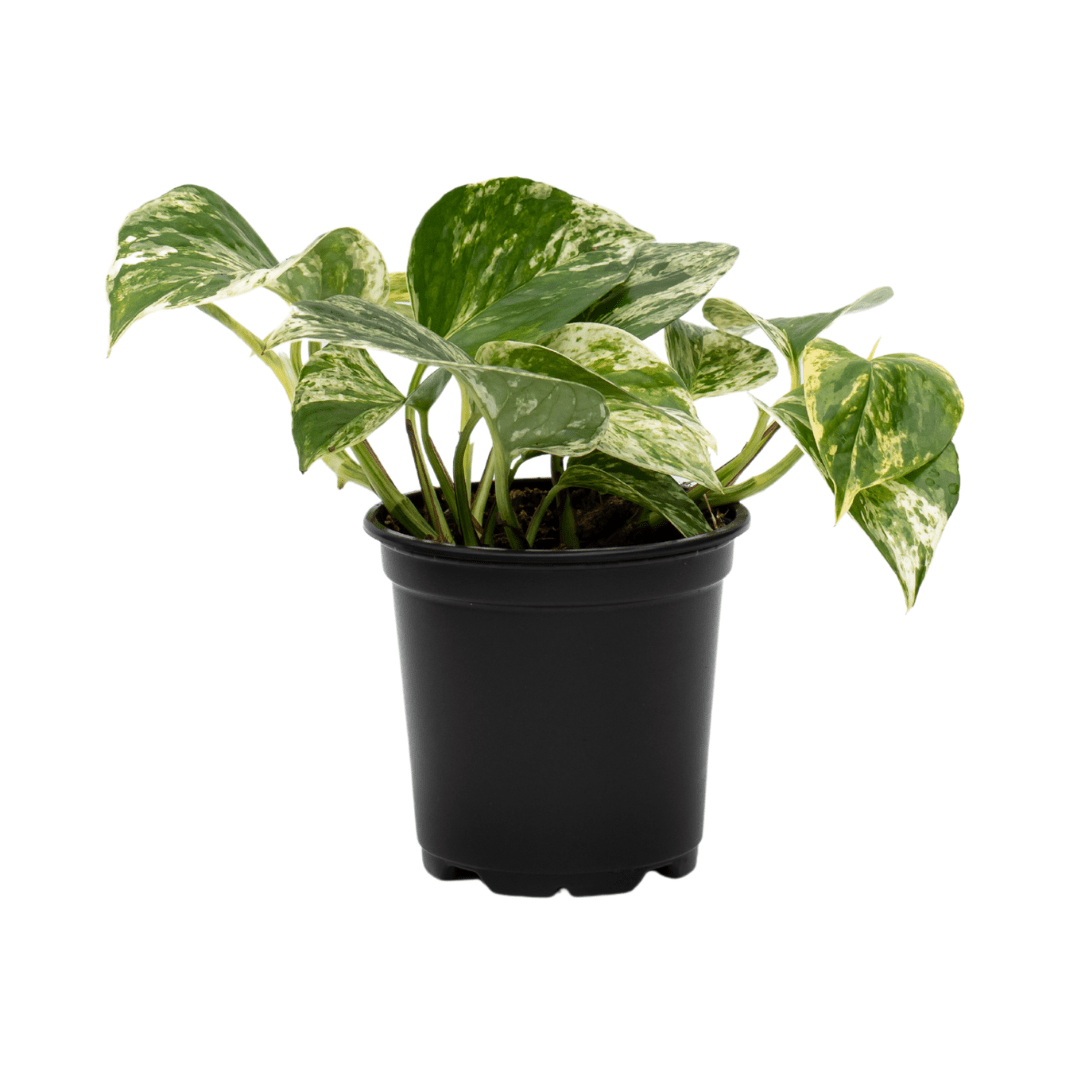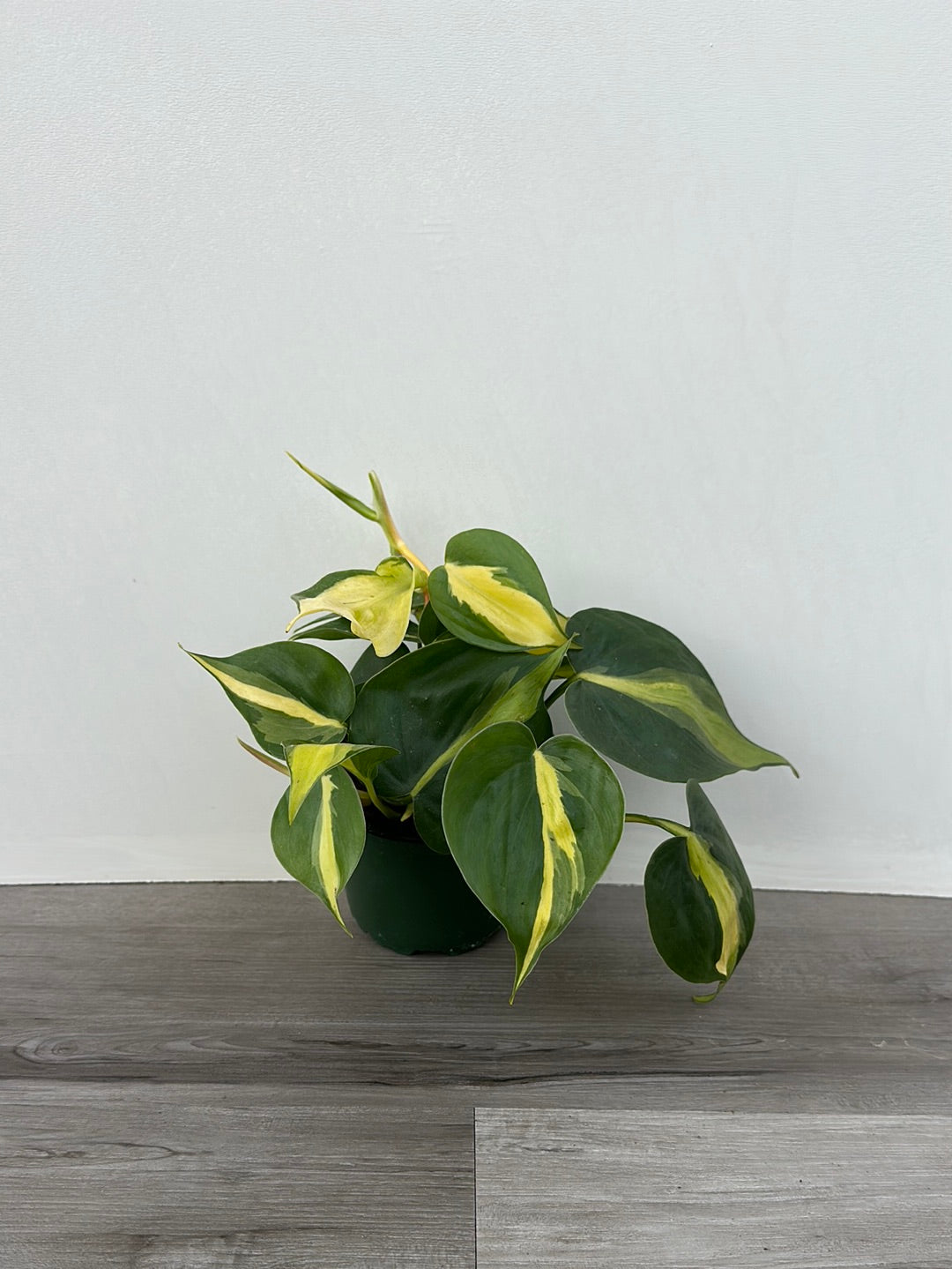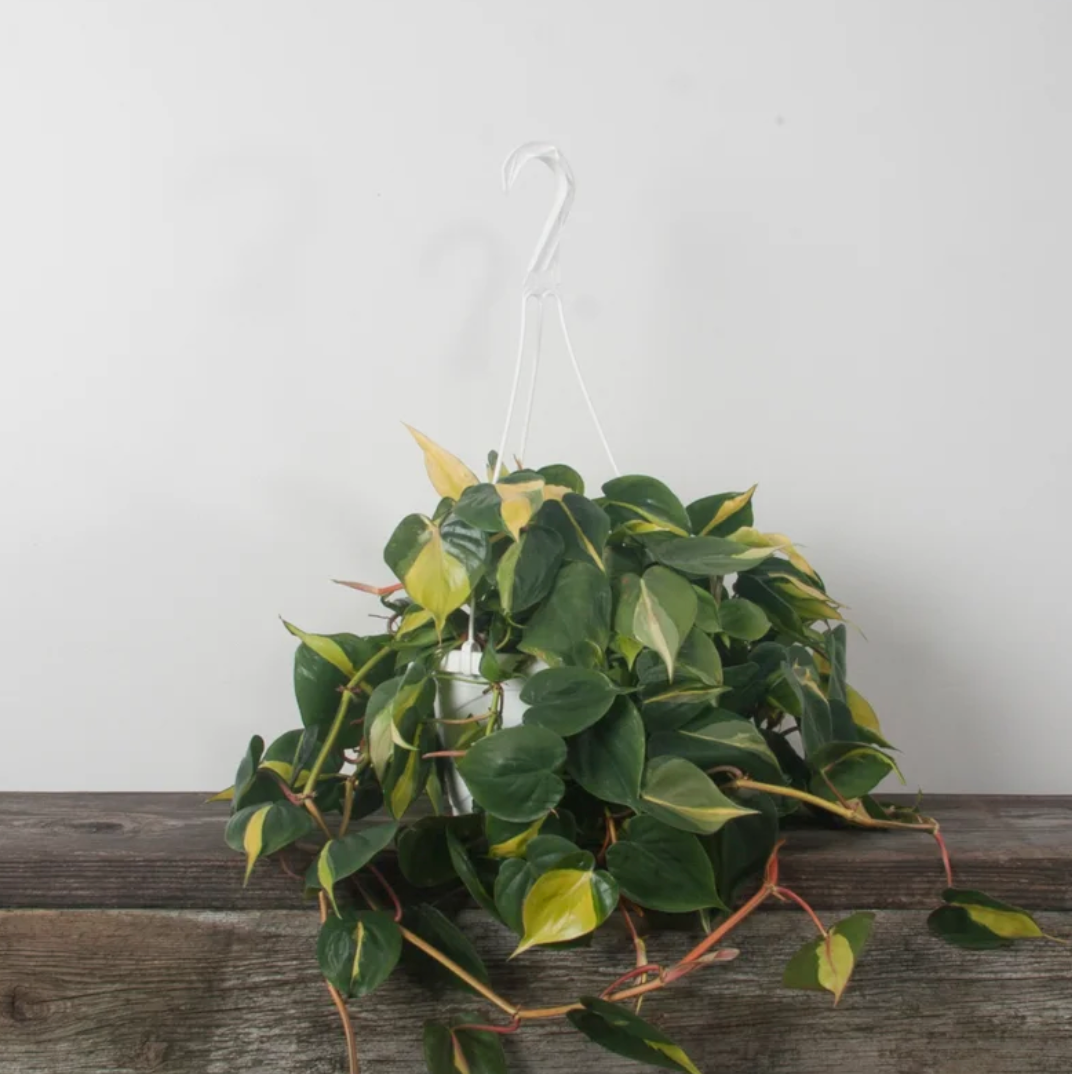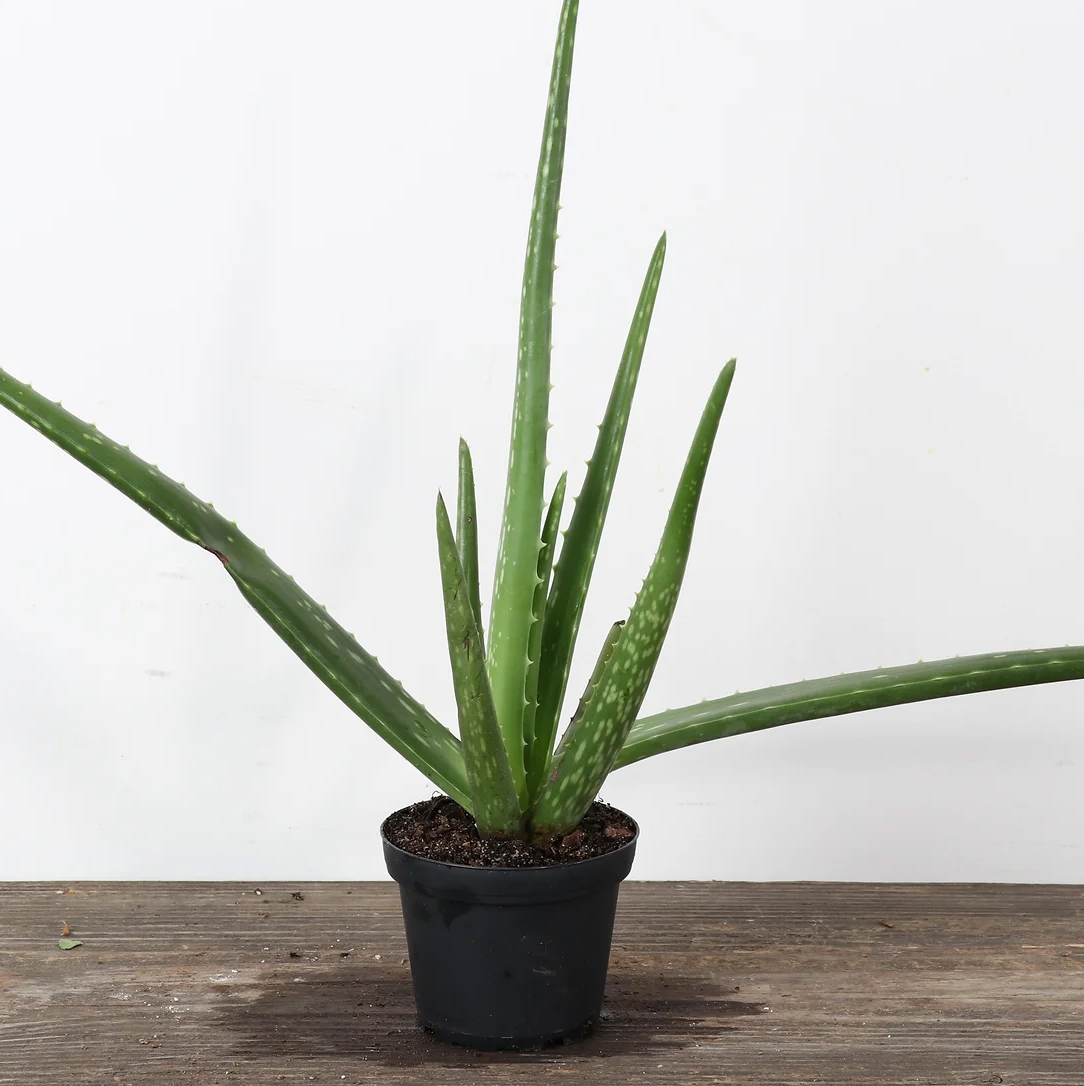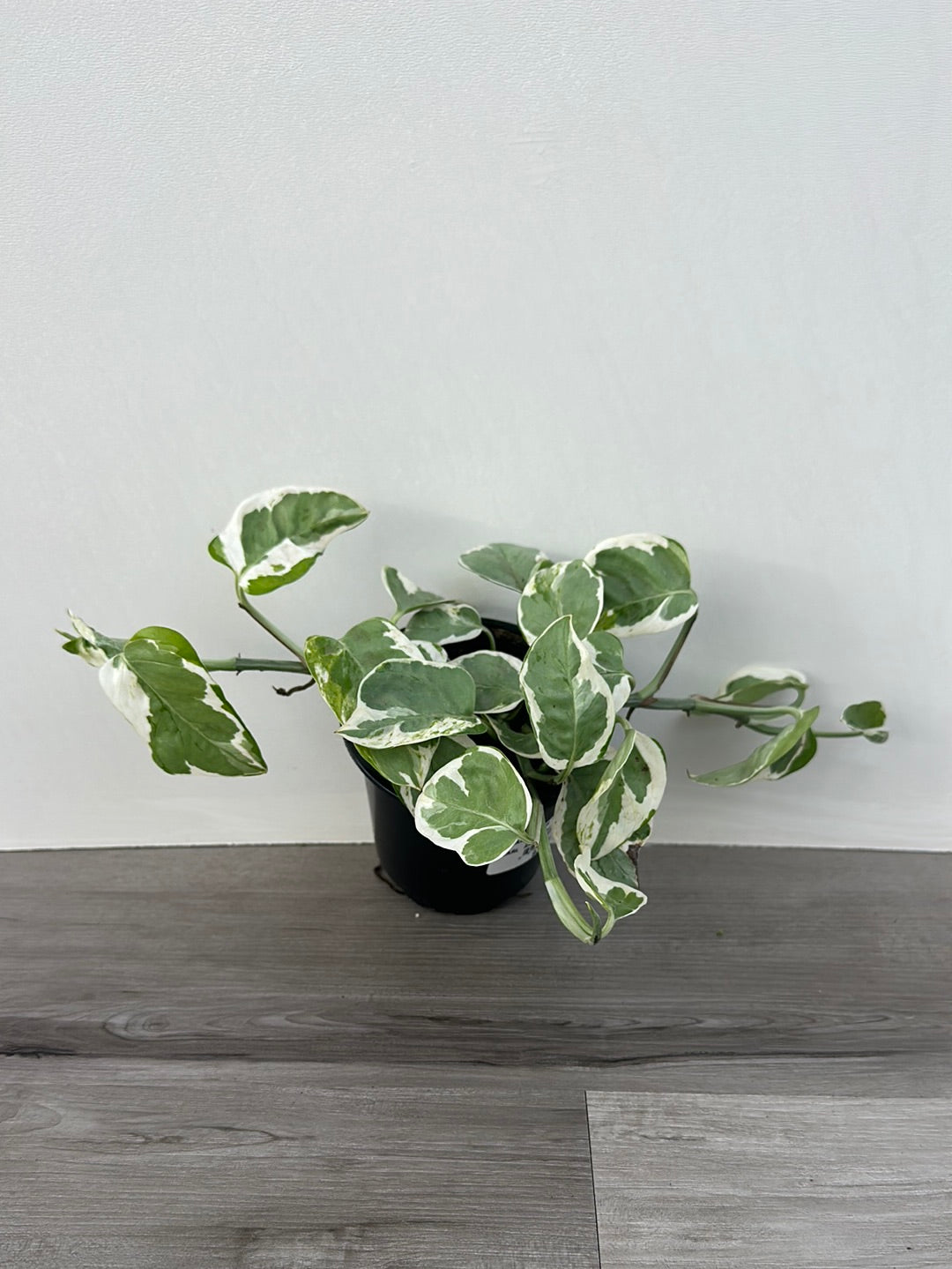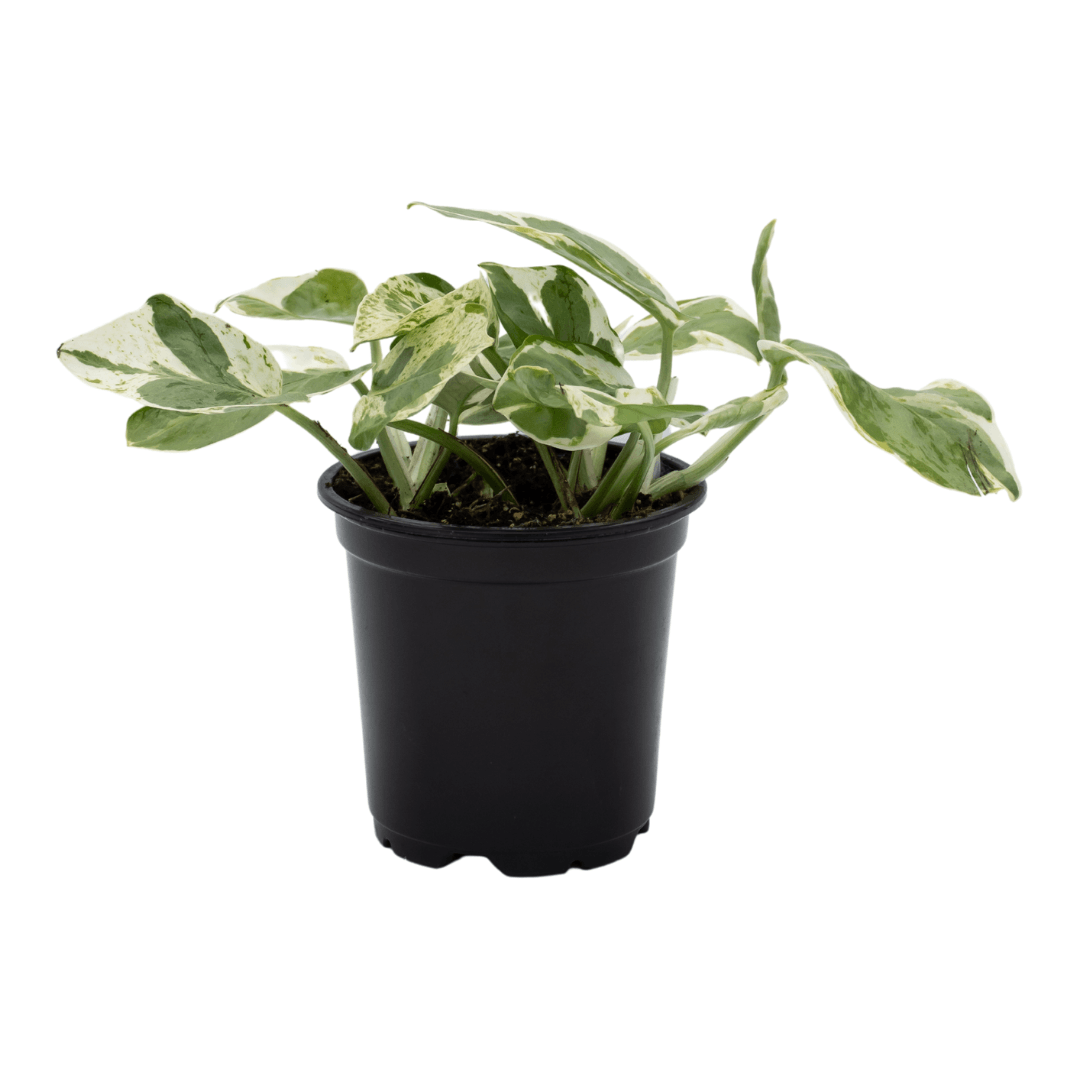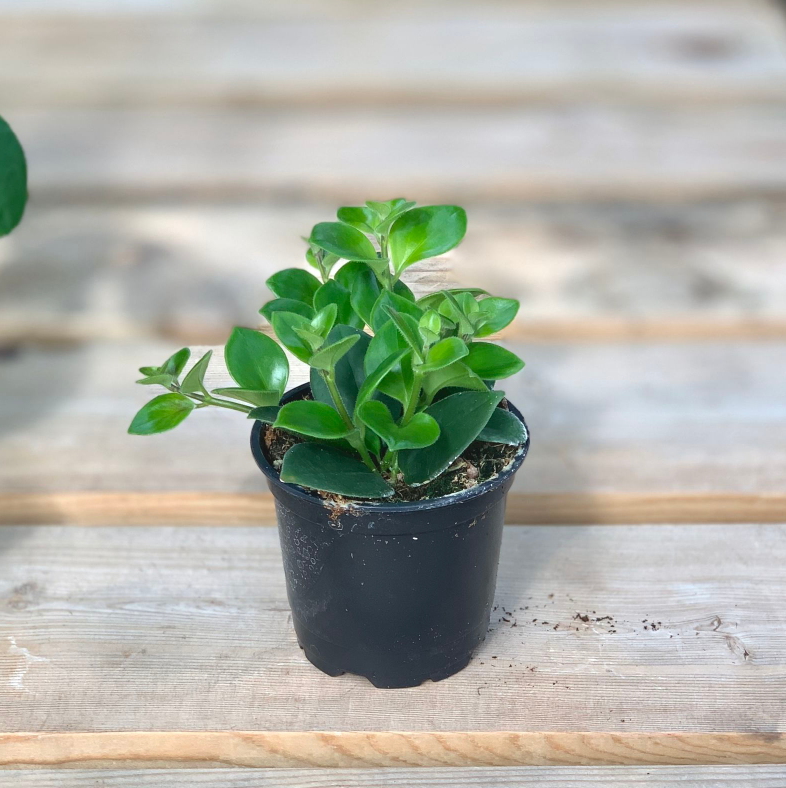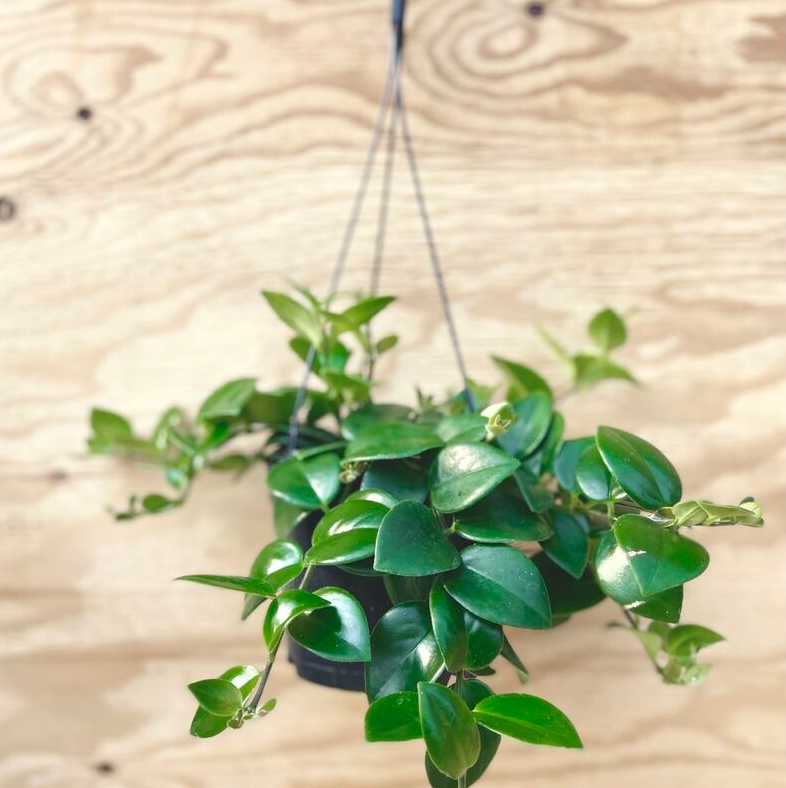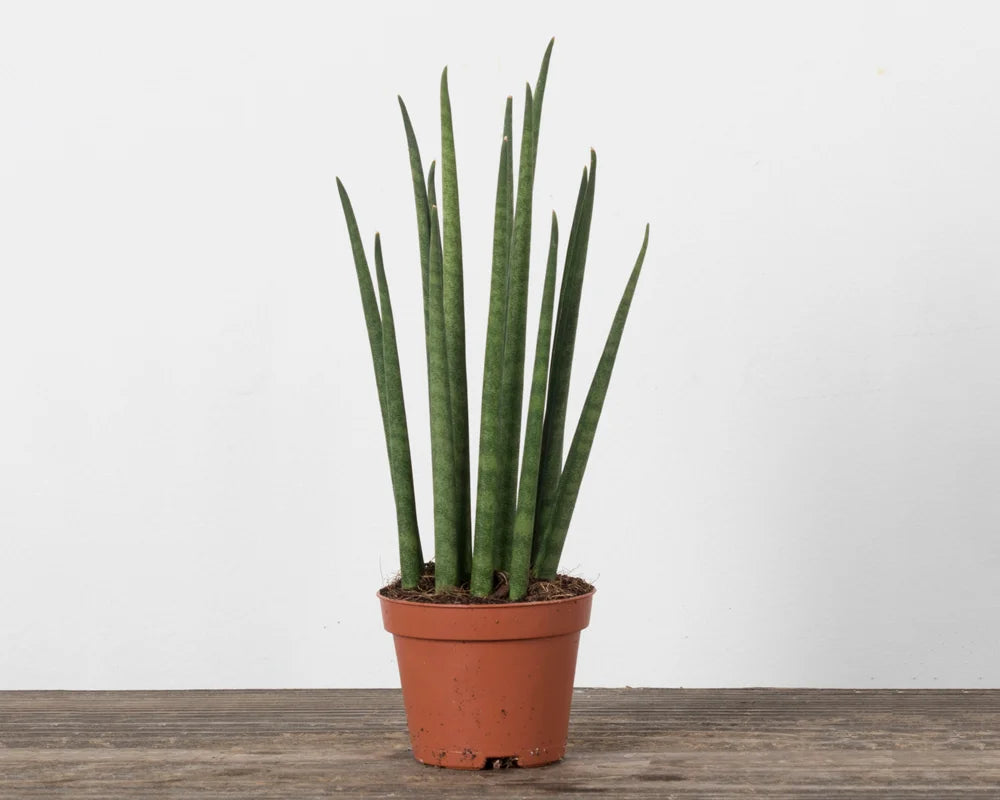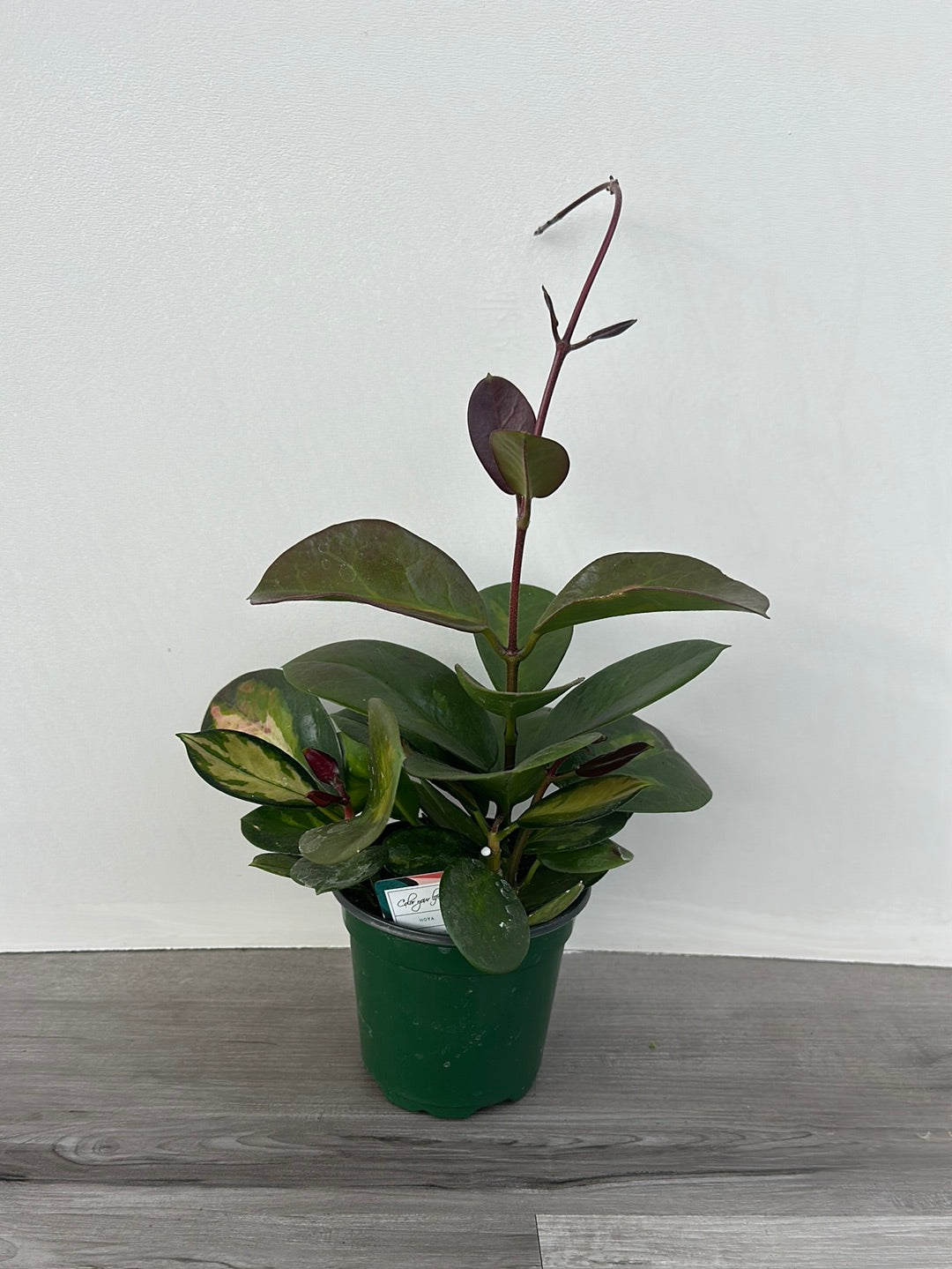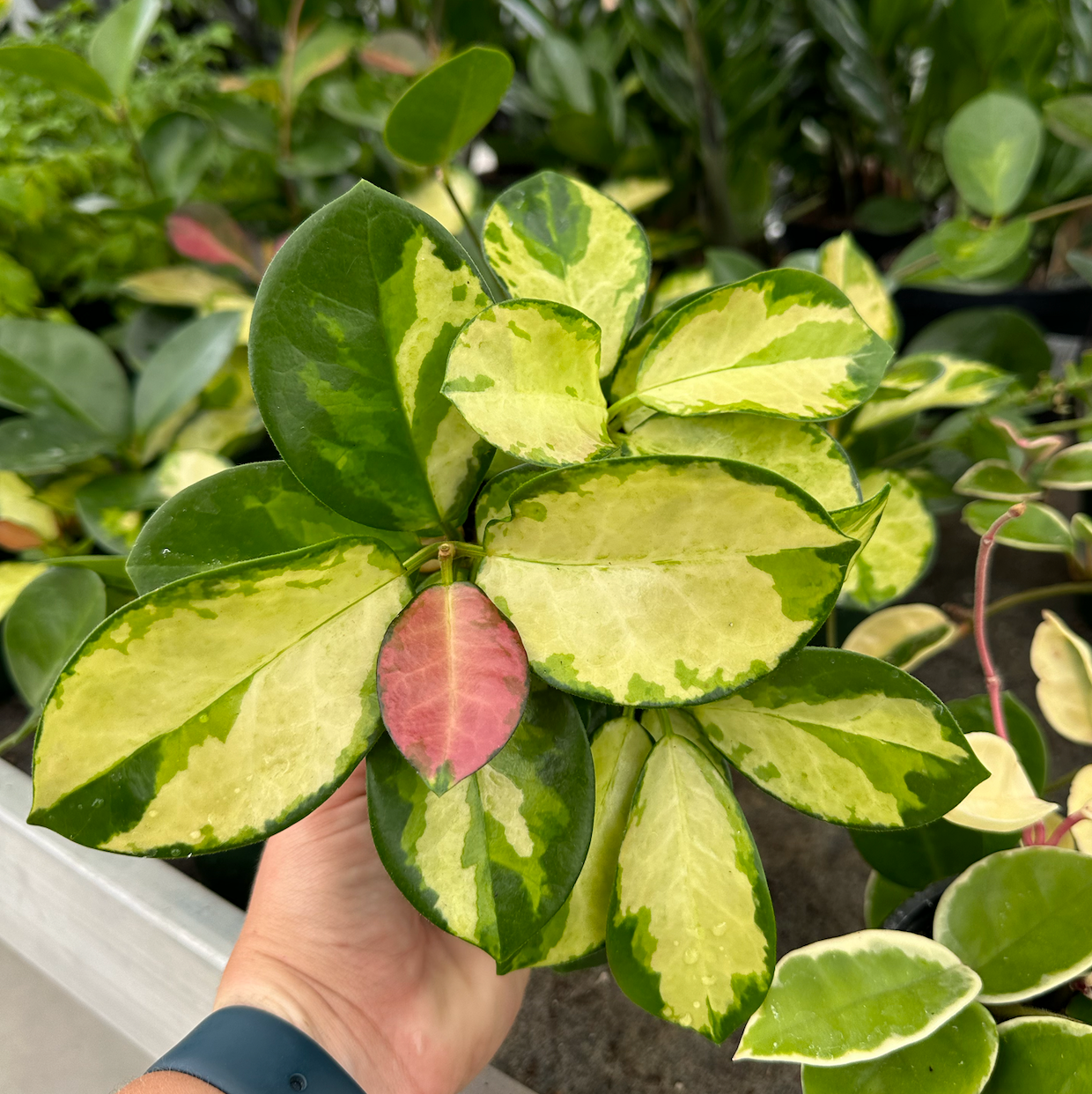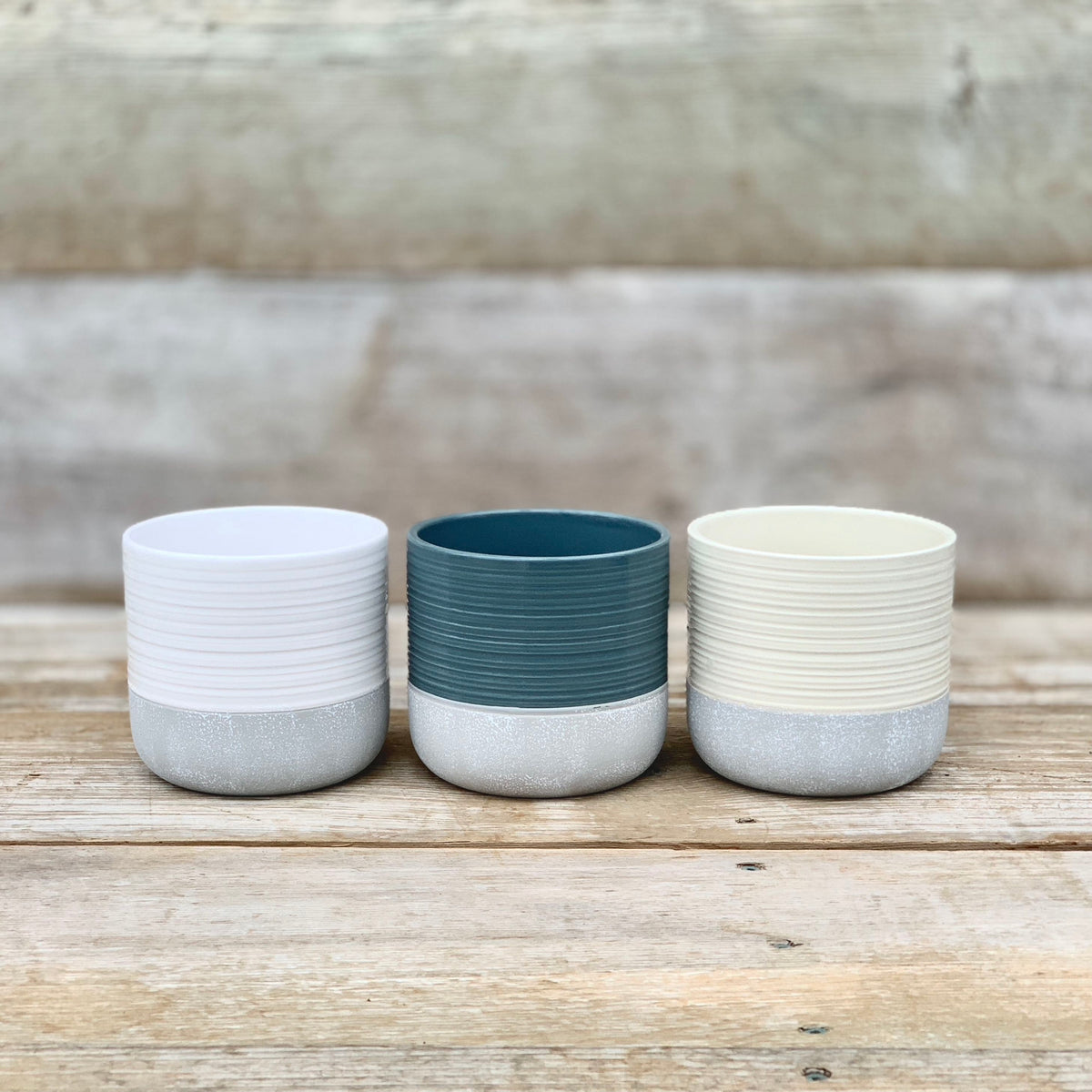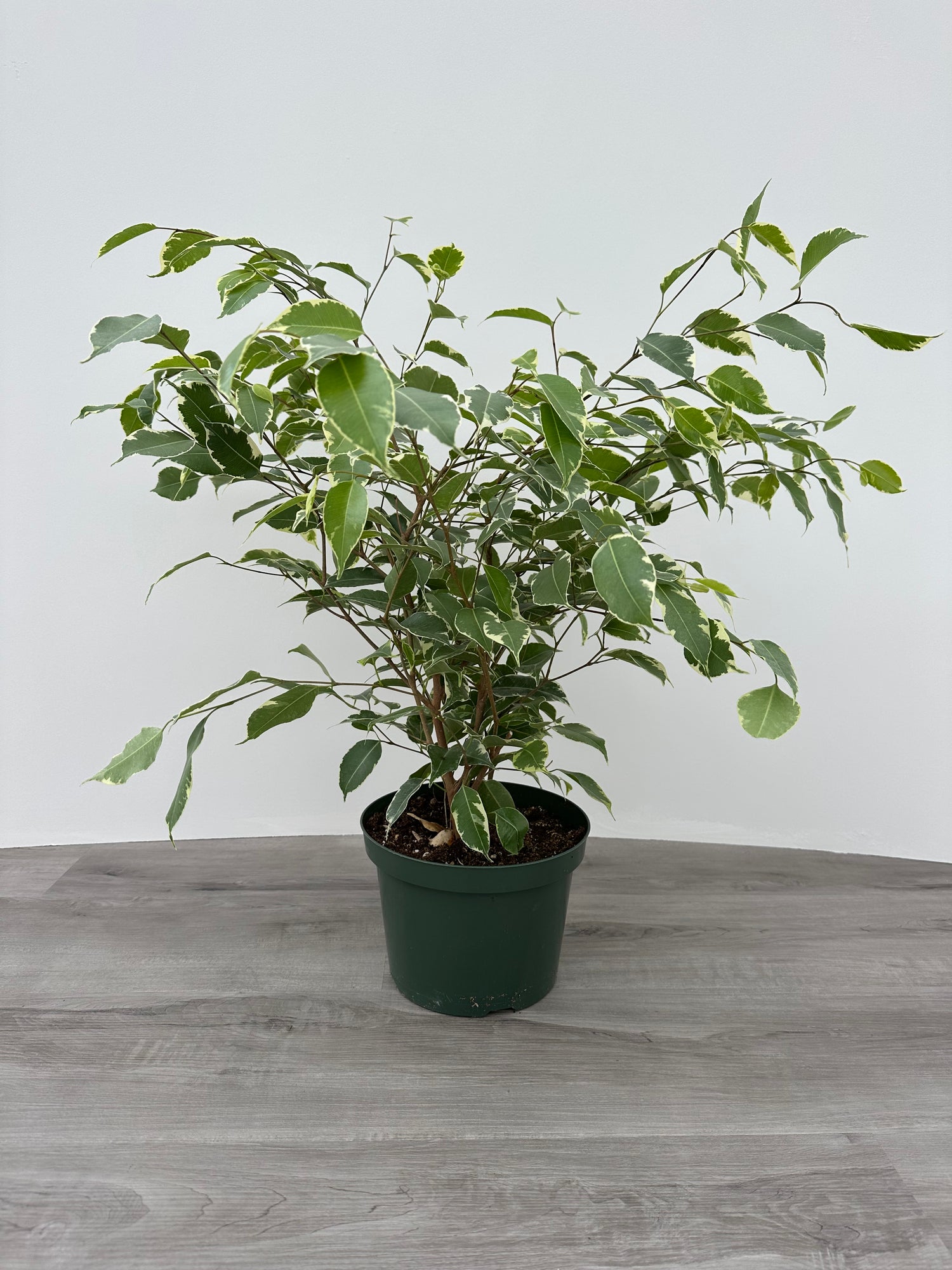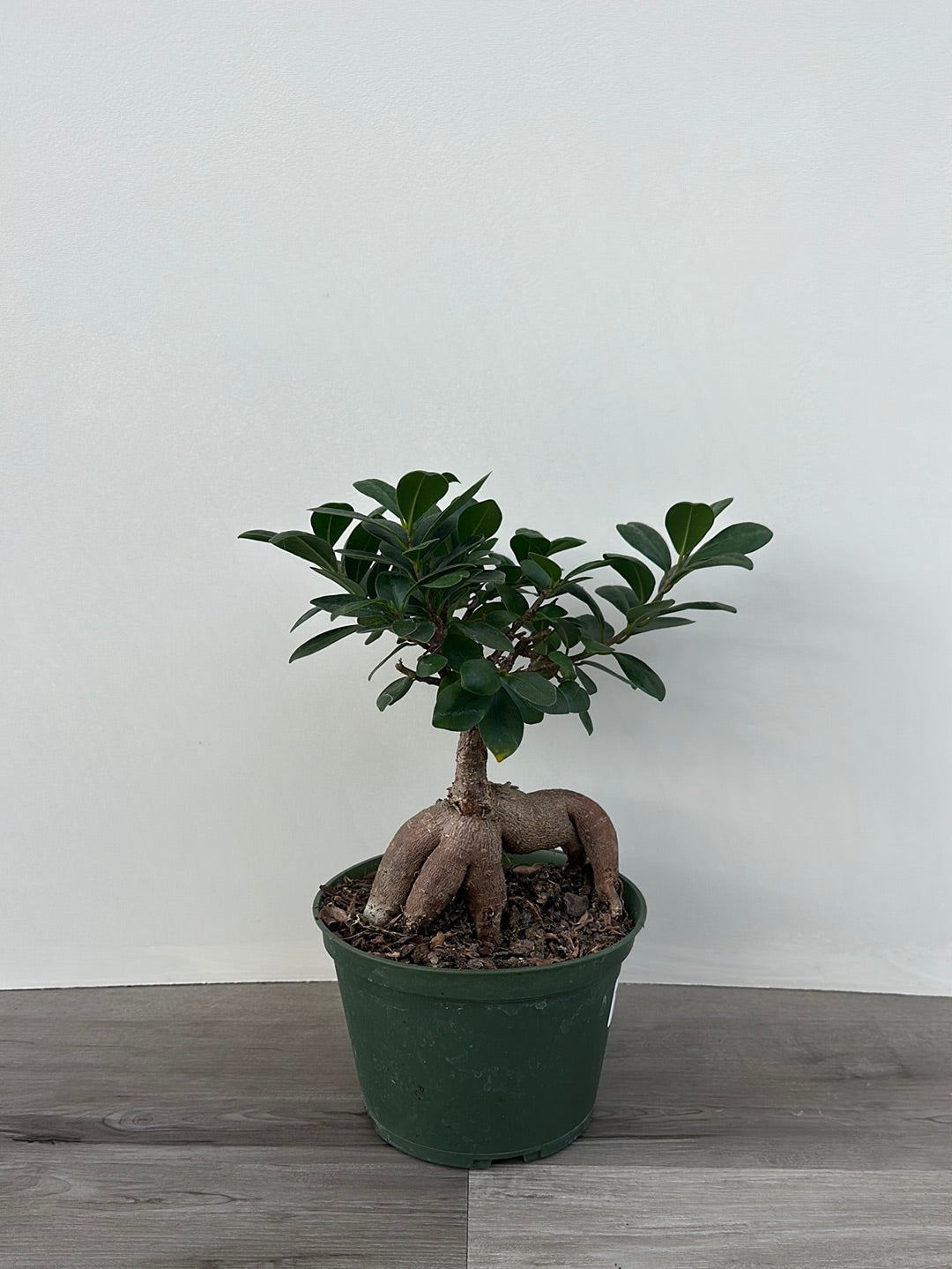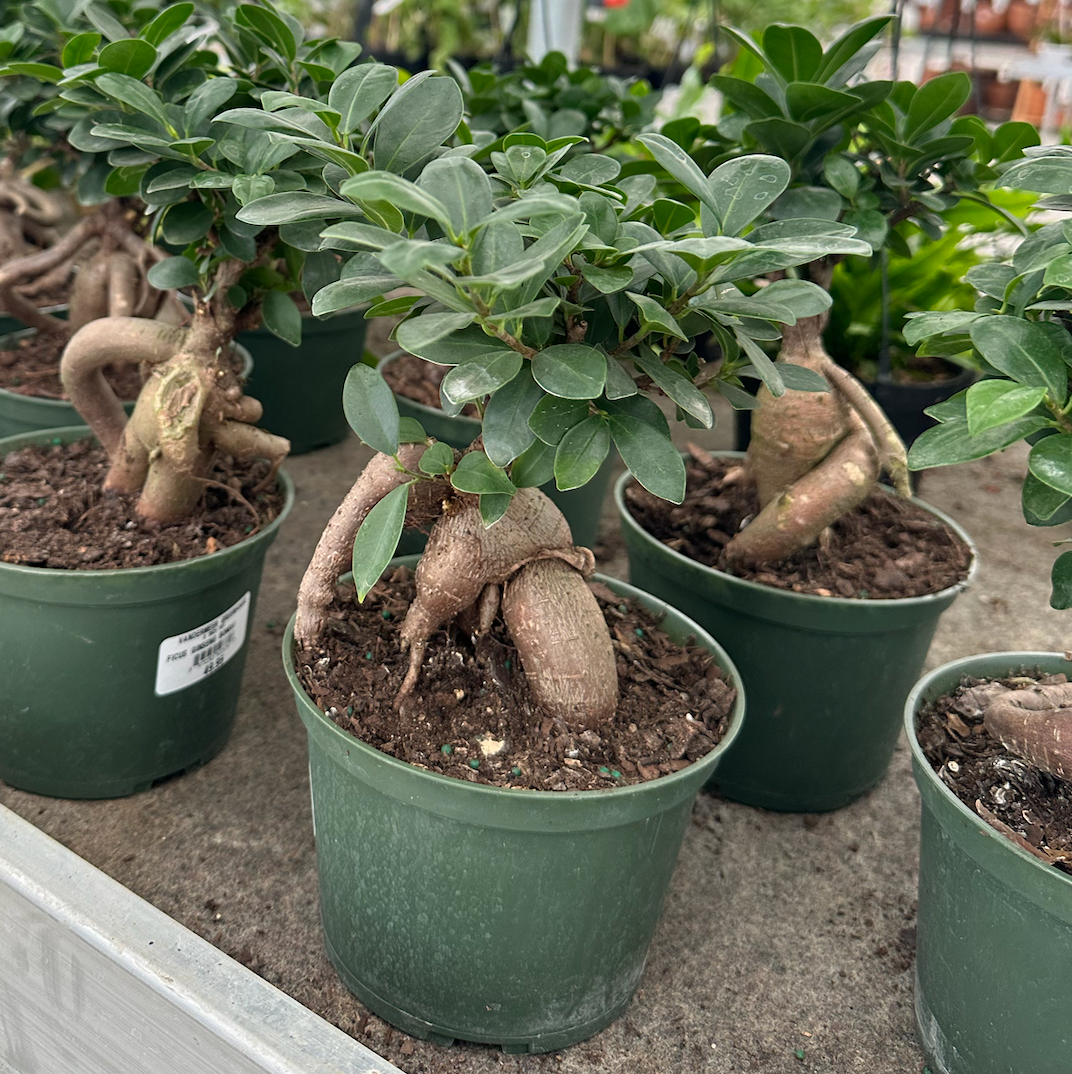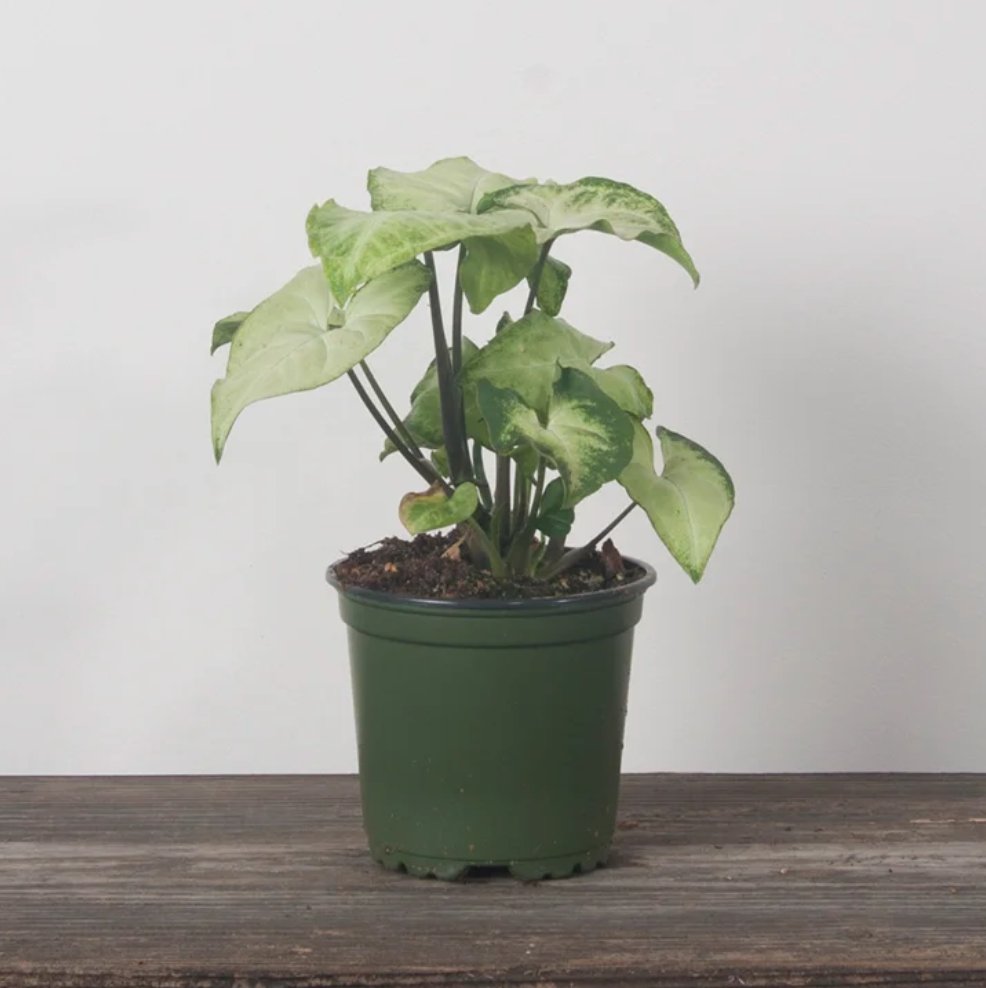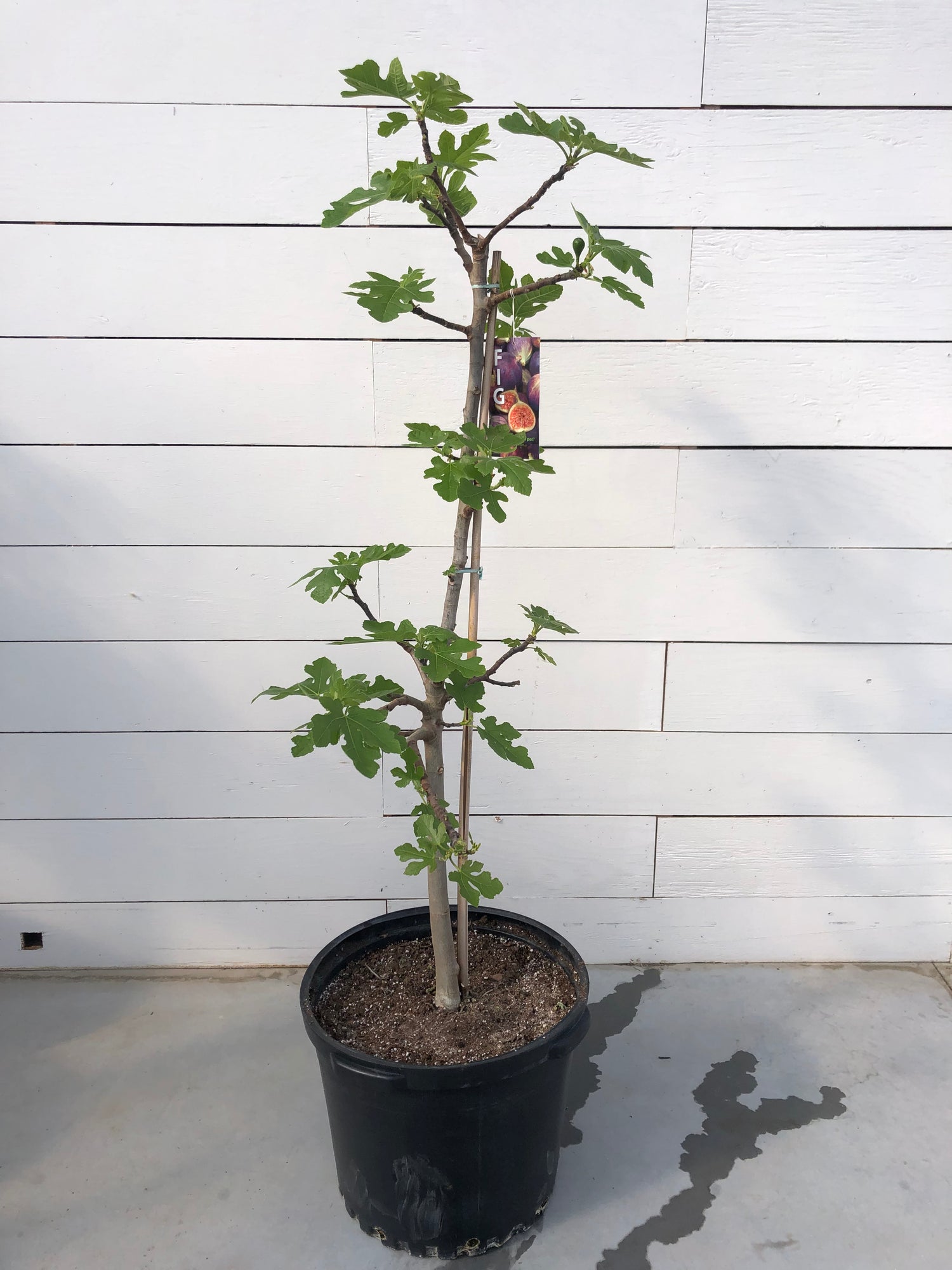31 products
31 products
Sort by:
4” House Plants
Marble Queen Pothos, scientifically known as Epipremnum aureum 'Marble Queen', is a stunning and popular vine appreciated for its variegated foliage and ease of care.
Light Requirement: Marble Queen Pothos thrives in moderate to bright, indirect light but can tolerate lower light conditions. Avoid exposing it to direct sunlight for extended periods, as this can scorch its leaves. Variegation may become less pronounced in low light.
Watering Requirement: Allow the top inch (2.5 cm) of the soil to dry out between waterings, then water thoroughly. Marble Queen Pothos prefers slightly moist soil but is susceptible to root rot if overwatered. Ensure proper drainage to prevent waterlogging.
Mature Length: Marble Queen Pothos can grow to impressive lengths, with vines trailing several feet when allowed to cascade or climb. Regular pruning can help control its size and encourage bushier growth.
Prayer plants ( Maranta ) are low-growing, spreading plants that thrive best when provided with greenhouse-like conditions, including warm, moist, gentle airflow, and plenty of fertilizer. Plants that are kept too cool or too dry are likely to lose their leaves or suffer from fungal infections that can cause the plant to die from root rot or collapse.
Goldfish Plant (Nematanthus gregarius) is an attractive and unique indoor plant, known for its glossy, dark green leaves and bright orange, tubular flowers that resemble goldfish, adding a whimsical touch to any space.
Light Requirement: Goldfish Plant thrives in bright, indirect light. It benefits from plenty of light to encourage blooming but should be protected from direct sunlight to prevent leaf scorch.
Watering Requirement: Keep the soil consistently moist but not waterlogged. Water thoroughly when the top inch of soil feels dry. Goldfish Plant enjoys a humid environment, so regular misting or the use of a humidity tray is beneficial.
Mature Height: Goldfish Plant has a trailing or arching growth habit, making it perfect for hanging baskets or elevated planters where its cascading foliage and flowers can be displayed.
The Philodendron Brasil is a vibrant and popular cultivar with heart-shaped leaves showcasing a striking mix of green and yellow hues, creating a visually appealing and dynamic indoor plant.
Light Requirement: Thriving in bright, indirect light, place the Philodendron Brasil in a location with filtered sunlight or partial shade. It can tolerate lower light conditions but benefits from exposure to moderate to bright light for optimal growth and coloration.
Watering Requirement: Allow the soil to partially dry between waterings, and water thoroughly. The Philodendron Brasil prefers slightly moist but well-draining soil. Be cautious not to overwater to prevent root issues.
Mature Height: With a climbing or trailing habit, the Philodendron Brasil can reach varying lengths, making it suitable for hanging baskets or climbing supports. Regular pruning helps control its size and promotes a bushy appearance.
Aloe Vera is a low-maintenance and soothing succulent, well-known for its fleshy, green leaves filled with a cooling gel often used for its healing and moisturizing properties.
Light Requirement: Aloe Vera thrives in bright, indirect to direct sunlight. It does best near a sunny window and can tolerate some direct sun, making it perfect for well-lit indoor spaces.
Watering Requirement: Allow the soil to dry out completely between waterings. Aloe Vera prefers dry conditions and is highly drought-tolerant. Overwatering should be avoided to prevent root rot.
Mature Height: Typically reaching 12 to 24 inches (30 to 60 cm) in height, Aloe Vera forms a rosette of upright leaves and may produce tall flower spikes with yellow or orange blooms under ideal conditions.
Pearl and Jade Pothos, scientifically known as Epipremnum aureum 'Pearls and Jade', is a popular and versatile trailing plant appreciated for its attractive variegated foliage and ease of care.
Light Requirement: Pearl and Jade Pothos thrives in moderate to bright, indirect light but can also tolerate low light conditions. Avoid exposing it to direct sunlight for prolonged periods, as this may scorch its leaves.
Watering Requirement: Allow the top inch (2.5 cm) of the soil to dry out between waterings, then water thoroughly. Ensure proper drainage to prevent waterlogging, as excessive moisture can lead to root rot.
Mature Length: Pearl and Jade Pothos can grow to impressive lengths, with vines reaching several feet in length when allowed to trail or climb. Regular pruning can help control its size and encourage bushier growth.
Small but Prickly! Handle with caution and care to avoid getting poked with one of it's spikes.
Succulents are well-suited to bright, dry environments and appreciate periods of neglect, making this an ideal house plants whether you have a green thumb or not!
Requires substantial amounts of light, receiving at least four to five hours of bright, direct light every day, and ideally six. Placing your Echeveria outdoors during the summer months will help it to thrive.
Pro tip: If you're moving your plant outside in the spring after growing indoors over the winter, make sure to make a gradual transition. Intense afternoon sunlight can cause sunburn, so place your plant where it receives a bit of shade when the sun is strongest.
The Lace Leaf Anthurium, an exquisite variety of Anthurium, features uniquely shaped, lace-like leaves that are both delicate and distinctive, adding an elegant touch to indoor spaces.
Light Requirement: Thriving in bright, indirect light, place the Lace Leaf Anthurium in a location with filtered sunlight or partial shade. It can tolerate lower light conditions but benefits from exposure to moderate to bright light for optimal growth and flowering.
Watering Requirement: Allow the soil to partially dry between waterings, and water thoroughly. The Lace Leaf Anthurium prefers slightly moist but well-draining soil. Avoid overwatering to prevent root issues.
Mature Height: With an upright growth habit, the Lace Leaf Anthurium typically reaches a height of around 1 to 2 feet (30 to 60 cm). Regular pruning helps maintain a neat appearance and encourages new growth.
The Lipstick Plant, or Aeschynanthus radicans, is a charming and vibrant indoor plant with glossy, green foliage and tubular, lipstick-shaped flowers with a deep red/black colour, creating a whimsical and tropical atmosphere.
Light Requirement: Thriving in bright, indirect light, place the Lipstick Plant in a location with filtered sunlight or partial shade. It can tolerate lower light conditions but benefits from exposure to moderate to bright light for robust flowering.
Watering Requirement: Keep the soil consistently moist but not waterlogged. Water when the top inch of the soil feels slightly dry. Ensure proper drainage and avoid overwatering to prevent root rot.
Mature Height: With a trailing growth habit, Lipstick Plants can reach varying lengths, often cascading 1 to 3 feet (30 to 90 cm). Regular pruning encourages branching and helps maintain a fuller appearance.
The Coffee Plant, or Coffea arabica, is an attractive indoor plant with glossy, dark green leaves, and in favorable conditions, it may produce fragrant white flowers and eventually coffee beans.
Light Requirement: Preferring bright, indirect light, place the Coffee Plant near a window with filtered sunlight. It can tolerate lower light conditions but benefits from exposure to moderate to bright light.
Watering Requirement: Keep the soil consistently moist but not waterlogged. Water when the top inch of the soil feels slightly dry. Avoid both drought stress and overwatering to support healthy growth.
Mature Height: With a slow growth rate, the Coffee Plant can reach a height of 2 to 4 feet (60 to 120 cm) indoors. Pruning can help maintain a bushy shape, and the plant may produce coffee cherries under optimal conditions.
Decor pot not included.
This Sanseveria Fernwood Mikado is a tough, low-maintenance houseplant that produces beautiful tiger-striped leaves.
It purifies the air through photosynthesis, storing carbon dioxide and releasing oxygen from its pores at night, creating a healthier environment for your home. Grows between 16-18'' high with leaf width of 1-2''
For Best Growth Results...
Water when dry, take care not to overwater to avoid root rot.
Fertilize sparingly, no more than 2x a year
*Do not consume: moderately toxic to animals and humans, can cause some adverse reactions when ingested. In general we advise this for all plants.
The Lipstick Plant, or Aeschynanthus radicans, is a charming and vibrant indoor plant with glossy, green foliage and tubular, lipstick-shaped flowers that add a burst of color, creating a whimsical and tropical atmosphere.
Light Requirement: Thriving in bright, indirect light, place the Lipstick Plant in a location with filtered sunlight or partial shade. It can tolerate lower light conditions but benefits from exposure to moderate to bright light for robust flowering.
Watering Requirement: Keep the soil consistently moist but not waterlogged. Water when the top inch of the soil feels slightly dry. Ensure proper drainage and avoid overwatering to prevent root rot.
Mature Height: With a trailing growth habit, Lipstick Plants can reach varying lengths, often cascading 1 to 3 feet (30 to 90 cm). Regular pruning encourages branching and helps maintain a fuller appearance.
Ficus Shivereana, a cultivar of the Ficus elastica, is a striking indoor plant with large, glossy, lime green & deep green variations in the leaves, creating a dramatic and sophisticated aesthetic.
Light Requirement: Thriving in bright, indirect light, place the Ficus in a location with filtered sunlight or partial shade. It can tolerate lower light conditions but benefits from exposure to moderate to bright light for optimal leaf coloration.
Watering Requirement: Allow the soil to partially dry between waterings, and water thoroughly. Ficus prefers slightly moist but well-draining soil. Be cautious not to overwater to prevent root issues.
White Princess Philodendron is a striking hybrid featuring dark green and pink variegated leaves, adding a touch of elegance to indoor spaces.
Light Requirement: Preferring bright, indirect light, place the plant in filtered sunlight or partial shade, avoiding prolonged exposure to direct sunlight.
Watering Requirement: Keep the soil consistently moist, watering when the top inch feels slightly dry, while avoiding both excessive dryness and waterlogged conditions.
Mature Height: With a climbing habit, White Princess Philodendron can reach varying heights; regular pruning helps maintain a more compact and aesthetically pleasing shape.
Hoya Australis Variegated, a captivating member of the Hoya family, features trailing vines adorned with succulent, variegated leaves, showcasing creamy-white edges that add a touch of elegance to indoor spaces.
Light Requirement: Thriving in bright, indirect light, place the Hoya Australis Variegated in a location with filtered sunlight or partial shade. It can tolerate lower light conditions but benefits from exposure to moderate to bright light for optimal growth and variegation.
Watering Requirement: Allow the soil to dry out partially between waterings, and water thoroughly. The Hoya Australis Variegated prefers a well-draining mix. Be cautious not to overwater, as Hoyas are susceptible to root rot.
Mature Height: With a trailing growth habit, Hoya Australis Variegated can reach varying lengths, often cascading down from hanging baskets. Regular pruning helps control its size and promotes a fuller appearance.
Variegated Benji Bush Ficus is a captivating indoor plant characterized by its stunning variegated foliage, boasting a mix of green and cream-colored leaves that bring elegance and charm to any indoor setting.
Light Requirement: This plant thrives in bright, indirect light, making it ideal for locations with filtered sunlight or partial shade. While it can tolerate lower light conditions, exposure to moderate to bright light is recommended to enhance the variegation and overall health of the plant.
Watering Requirement: Maintain slightly moist but well-draining soil by allowing it to partially dry between waterings. Water thoroughly when needed, ensuring not to overwater to prevent potential root issues.
Mature Height: With a compact and bushy growth habit, the Variegated Benji Bush Ficus typically reaches a height of 3 to 6 feet (90 to 180 cm) indoors. Regular pruning can help maintain its desired shape and size, ensuring a lush and vibrant appearance.
The Ficus Ginseng Bonsai is a distinctive bonsai variety featuring a thick, twisted trunk with shiny, oval-shaped, and vibrant green leaves, creating an artistic and captivating appearance.
Light Requirement: Preferring bright, indirect light, place the Ficus Ginseng Bonsai in a location with filtered sunlight. It can tolerate lower light conditions but benefits from exposure to moderate to bright light for optimal growth.
Watering Requirement: Allow the soil to partially dry between waterings, and water thoroughly. Ficus Ginseng Bonsai prefers slightly moist but well-draining soil. Avoid overwatering to prevent root rot.
Mature Height: Maintaining a compact size, the Ficus Ginseng Bonsai is ideally suited for bonsai cultivation and can reach a height of 8 to 12 inches (20 to 30 cm) with regular pruning to maintain its intricate form.
The Myrtle Ball Topiary is an elegant and classic ornamental plant crafted into a spherical shape, featuring glossy green leaves, creating a refined and structured appearance.
Light Requirement: Thriving in bright, indirect light, place the Myrtle Ball Topiary in a location with filtered sunlight or partial shade. It can tolerate lower light conditions but benefits from exposure to moderate to bright light for optimal growth.
Watering Requirement: Allow the soil to partially dry between waterings, and water thoroughly. The Myrtle Ball Topiary prefers slightly moist but well-draining soil. Avoid overwatering to maintain the health of the plant.
Mature Height: Maintaining its spherical form, the Myrtle Ball Topiary typically reaches a height and diameter of around 1 to 2 feet (30 to 60 cm). Regular pruning can help preserve the topiary shape and promote a neat appearance.
Pink Princess Philodendron is a striking hybrid featuring dark green and pink variegated leaves, adding a touch of elegance to indoor spaces.
Light Requirement: Preferring bright, indirect light, place the plant in filtered sunlight or partial shade, avoiding prolonged exposure to direct sunlight.
Watering Requirement: Keep the soil consistently moist, watering when the top inch feels slightly dry, while avoiding both excessive dryness and waterlogged conditions.
Mature Height: With a climbing habit, Pink Princess Philodendron can reach varying heights; regular pruning helps maintain a more compact and aesthetically pleasing shape.
**Online orders will be charged delivery fee for 10,15 & 25gal. trees.**
Fig trees like to receive a min of 6 hours of indirect/direct light every day. Placing the tree in a south facing window or conservatory is ideal. The more light your fig tree receives the more fruit it will produce.
15 Gal. Pot 5-7' tall from ground.
Ficus Lyrata
Native to tropical western Africa, Ficus lyrata, commonly known as the fiddle-leaf fig, has very large green leaves with a leather-like texture. Although Ficus lyrata grows naturally in lowland tropical forests it can thrive in a large range of environments. Place in bright indirect sunlight, on the ground where it can grow up to 6' tall. Keep soil moist.



